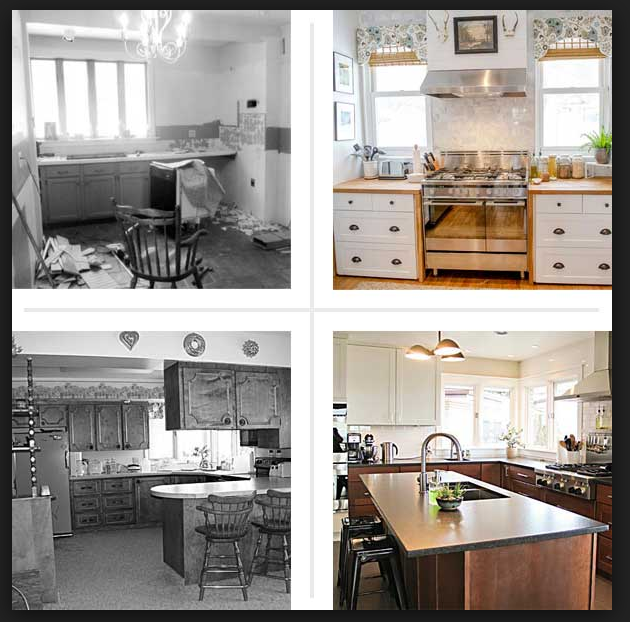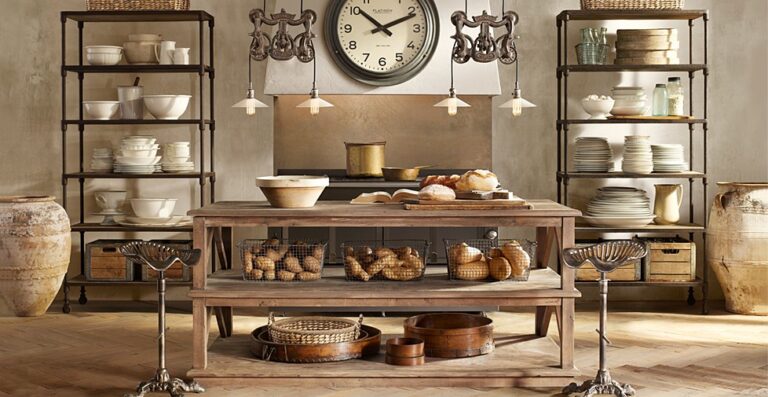A Comprehensive Guide to Kitchen Restoration
Renovate Your Old Kitchen can be a rewarding project that breathes new life into one of the most important spaces in your home. At Chicago Kitchen Renovations, we specialize in kitchen restoration, transforming outdated spaces into modern, functional, and aesthetically pleasing environments. Here’s a comprehensive guide to help you through the process.
1. Assess Your Current Kitchen
✦ Evaluate the Layout
Before starting your kitchen restoration, evaluate the current layout. Identify what works well and what needs improvement. Consider the following:
- Traffic flow: Is the kitchen easy to navigate?
- Work zones: Are your cooking, cleaning, and storage areas efficiently arranged?
- Space utilization: Is there enough countertop and storage space?
✦ Inspect Structural Elements
Check the structural integrity of your kitchen. Look for signs of wear and tear in the flooring, walls, and ceiling. Key aspects to inspect include:
- Flooring: Check for cracks, warping, or loose tiles.
- Walls and ceilings: Look for signs of mold, water damage, or structural issues.
- Cabinets and countertops: Assess their condition to decide if they need repair or replacement.
✦ Evaluate Electrical and Plumbing Systems
Ensure that your kitchen’s electrical and plumbing systems are up to code and functioning properly. Important checks include:
- Outlets and wiring: Verify if they can handle modern appliances.
- Plumbing fixtures: Check for leaks or outdated piping.
- Lighting: Ensure adequate lighting for cooking and dining areas.
2. Plan Your Kitchen Restoration
✦ Set a Budget
Determine how much you are willing to spend on your kitchen restoration. Your budget should cover:
- Labor costs: Hiring professionals for tasks you can’t do yourself.
- Materials: Quality cabinets, countertops, appliances, and finishes.
- Contingency: An additional 10-20% for unexpected expenses.
✦ Design Your New Kitchen
Plan the design and functionality of your new kitchen. Consider:
- Style: Choose a theme that complements your home’s decor (e.g., modern, traditional, farmhouse).
- Layout: Opt for efficient layouts like the work triangle, which connects the sink, stove, and refrigerator.
- Features: Decide on must-have features such as an island, pantry, or upgraded appliances.
✦ Hire Professionals
Engage experienced professionals for various aspects of the renovation. Important steps include:
- Contractors: Hire a reliable general contractor or specialized tradespeople.
- Designers: Work with a kitchen designer for layout and aesthetic advice.
- Permits: Ensure you obtain necessary permits for structural or major electrical and plumbing work.

3. Choose Materials and Finishes
✦ Select Cabinets and Countertops
Cabinets and countertops are key elements of kitchen restoration. When choosing these, consider:
- Durability: Opt for materials that withstand daily wear and tear.
- Style: Choose colors and finishes that match your design theme.
- Storage: Incorporate efficient storage solutions like pull-out shelves and deep drawers.
✦ Pick Flooring and Backsplash
Your kitchen floor and backsplash should be both functional and stylish. Key considerations include:
- Flooring: Select durable, easy-to-clean materials such as tile, hardwood, or vinyl.
- Backsplash: Choose a backsplash that complements your countertops and adds a visual focal point.
- Cohesion: Ensure your flooring and backsplash work together to create a harmonious look.
✦ Update Fixtures and Hardware
Modernize your kitchen with new fixtures and hardware. Focus on:
- Faucets and sinks: Choose high-quality, durable options that match your style.
- Lighting: Install task lighting for work areas and ambient lighting for overall brightness.
- Hardware: Update cabinet handles, knobs, and pulls for a fresh look.
4. Implement the Renovation
Demolition and Prep Work
Start with the demolition and preparation phase. Essential steps include:
- Clear the area: Remove old cabinets, appliances, and fixtures.
- Protect surfaces: Cover floors and other areas to prevent damage during demolition.
- Address issues: Fix any structural or system issues discovered during the inspection.
✦ Install New Elements
Proceed with installing new elements in your kitchen. Focus on:
✦ Finishing Touches
Complete your kitchen restoration with finishing touches. Consider:
- Painting: Choose colors that complement your design and apply them to walls and trim.
- Accessories: Add decor items like rugs, curtains, and wall art.
- Final inspection: Ensure everything is functional and meets your standards.
| Common Mistakes to Avoid During Kitchen Restoration | |
|---|---|
| Rushing planning | Take time to design layout and choose materials wisely. Rushing can lead to costly errors. |
| Ignoring functionality | Ensure the layout suits your needs. A beautiful kitchen that’s impractical won’t serve you well. |
| Overlooking storage | Maximize space with efficient storage solutions. Lack of storage can clutter and diminish functionality. |
| Underestimating budget | Plan for unexpected expenses. Underestimating costs can lead to unfinished projects or compromises. |
| Skimping on quality | Invest in durable materials and skilled labor. Cutting corners may result in frequent repairs or replacements. |
| Neglecting lighting | Adequate lighting is crucial. Poorly lit areas can affect functionality and diminish the ambiance. |
Frequently asked questation for Kitchen Restoration
Q-1 How Long Does a Kitchen Restoration Take?
The duration of a kitchen restoration depends on the scope of the project. Typically, it can take anywhere from 4 to 12 weeks. Factors influencing the timeline include the complexity of the design, the extent of structural changes, and the availability of materials and labor.
Q-2 What Is the Cost of Kitchen Restoration?
Costs vary widely based on the size of your kitchen and the materials you choose. On average, kitchen restorations can range from $10,000 to $50,000. It’s crucial to set a budget and stick to it while allowing some flexibility for unexpected expenses.
Q-3 Can I Live in My House During the Renovation?
Living in your house during a kitchen restoration is possible, but it may be inconvenient. Setting up a temporary kitchen in another room can help. Be prepared for noise, dust, and limited access to cooking facilities during the renovation.
Contact Us
At Chicago Kitchen Renovations, we are committed to making your kitchen restoration experience smooth and enjoyable. Our team of experts is here to guide you through every step of the process. For a consultation or to learn more about our services, contact us at amg@amgproline.com or (708) 289-5325. We look forward to helping you create the kitchen of your dreams!
Conclusion
Kitchen restoration is a significant undertaking, but with careful planning and the right professionals, it can transform your home. Assess your current space, plan meticulously, choose quality materials, and execute the renovation with precision. Chicago Kitchen Renovations is here to support you every step of the way, ensuring your old kitchen becomes a beautiful, functional centerpiece of your home.


